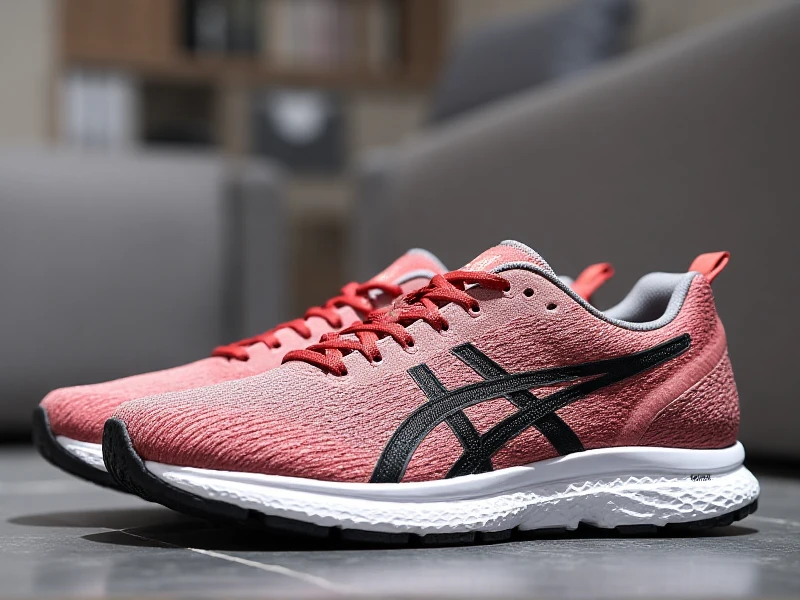Finding Your Perfect Men's Training Shoes: A Comprehensive Guide for Peak Performance
2025-06-06

Choosing the right pair of shoes can transform your workouts from mediocre to exceptional. Men's training shoes are crafted specifically for the demands of various exercises, providing stability, cushioning, and flexibility that regular sneakers can't match. Whether you're hitting the gym for weight training, cardio intervals, or high-intensity sessions, the right men's training shoes minimize injury risks and maximize your performance. In this guide, we'll dive deep into what makes these shoes essential, how to select the best pair for your needs, and tips to get the most out of them. Get ready to step up your fitness game with confidence!
Understanding Men's Training Shoes
Men's training shoes differ significantly from standard running or walking shoes. Designed as all-purpose footwear, they handle lateral movements common in activities like cross-training, circuit workouts, and agility drills. The key benefits start with superior stability—features like a wider base and reinforced midsoles prevent ankle rolls during side-to-side actions. Cushioning is tuned for high-impact exercises, absorbing shock to protect joints without sacrificing ground feel. Plus, the lightweight, breathable materials keep feet cool during intense routines. For anyone serious about fitness, investing in quality men's training shoes means fewer aches, better longevity, and a tailored fit for daily training sessions.
Essential Features to Look For
When shopping for men's training shoes, focus on five critical elements to ensure a smart purchase. First, cushioning technology: Opt for models with responsive foam or gel inserts that adapt to your movements, providing support without bulk. For instance, ample rear-foot cushioning is ideal for jumping activities, while minimal cushioning near the forefoot aids in stability during lifts. Second, outsole traction: Look for durable rubber patterns (like herringbone or multidirectional lugs) for grip on gym floors or outdoor surfaces, reducing slippage risks. Third, upper construction: Mesh or knit fabrics offer ventilation and flexibility, while synthetic reinforcements add durability around high-wear areas. Fourth, support systems: Features like arch support or heel counters align your foot during dynamic workouts, ideal for those with flat feet or overpronation. Lastly, weight: Aim for lightness (around 8-12 ounces per shoe) to avoid fatigue in endurance sessions.
Matching Shoes to Your Workout Type
Not all training shoes suit every exercise, so consider your primary activities to find the perfect match. For strength training and weightlifting, prioritize low-drop shoes with minimal cushioning and a firm, flat outsole. This design improves balance and force distribution during lifts, with brands often emphasizing wide toe boxes for natural toe splay. If HIIT or plyometrics dominate your routine, choose men's training shoes with responsive cushioning and ankle support to handle explosive moves—moderate drop heels help with shock absorption for high-impact jumps. For circuit training that mixes strength and cardio, versatile cross-trainers with all-round features are unbeatable, offering a balance of flexibility and stability. Always try on shoes after a workout when your feet are swollen to assess fit accurately—aim for a thumb's width of space at the toe end to prevent blisters.
Practical Buying Tips and Recommendations
Navigating the crowded market of men's training shoes can be daunting, but start by considering your budget and long-term needs. Aim to spend $80-$150 for well-regarded options that blend quality and longevity; mid-range shoes often outlast budget pairs in cushioning retention and support. When selecting, prioritize fit over trends—visit a store for professional fitting if possible, or use online size guides from trusted retailers. As for recommendations, versatile choices include options with removable insoles for custom orthotics or weather-resistant materials for outdoor use. Popular categories include lightweight trainers for agility drills and rugged designs for trail-based training. Remember, user reviews on forums or sites can provide real-world insights into comfort and durability. Don't overlook seasonal factors; breathable uppers shine in summer, while water-resistant pairs are lifesavers for winter sessions. Rotating between two pairs can extend each shoe's life by giving them time to recover foam compression.
Long-Term Care for Lasting Performance
Once you've invested in a great pair of men's training shoes, proper maintenance keeps them performing like new. Start by cleaning them regularly—wipe down exteriors with a damp cloth after sweaty workouts, and use gentle soap for stubborn stains. Avoid machine washing, as it degrades materials; instead, air-dry them away from direct heat to preserve shape. Store your shoes in a cool, dry spot with cedar inserts to prevent odors, and replace the insoles every 6-12 months for fresh support. Rotate your men's training shoes with another pair if you train daily; this prevents early wear and tear, extending their lifespan to 300-500 miles of use. Inspect soles monthly for signs of excessive flattening—it's often a cue to replace them.
Elevate your fitness journey by choosing the ideal men's training shoes tailored to your workouts. With the right pair, you'll experience unparalleled comfort, reduced injury risks, and consistently stronger results. Head to reputable retailers, prioritize fit and function, and step confidently into every session. What's your favorite type of men's training shoes for daily routines?
Category: